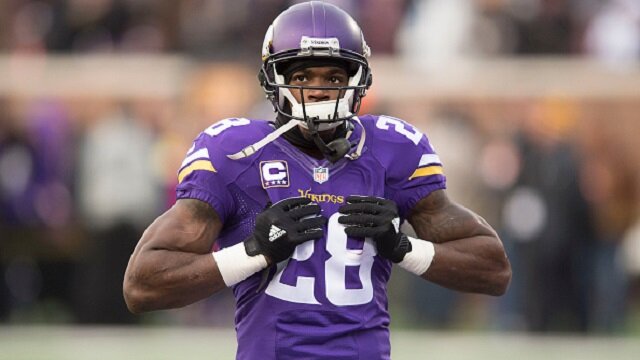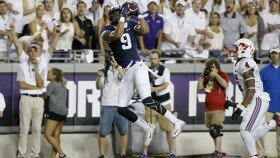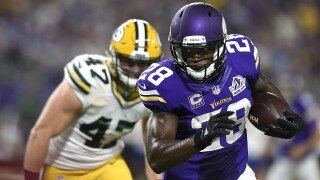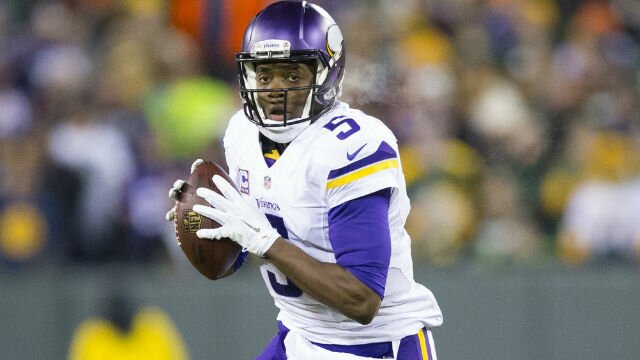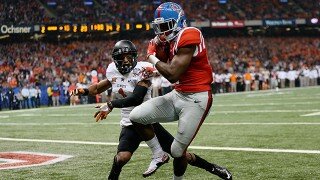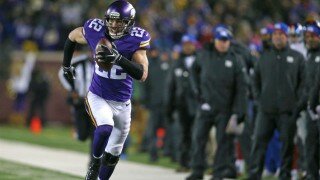After winning 11 games and the NFC North last season, the future looks bright for the Minnesota Vikings. A roster overhaul is not needed heading toward next season, but if some key need areas are addressed the Vikings could make a longer playoff run.
The Vikings were the only team in the league to start the same five offensive linemen in the same spots for every game last year. But with the consistent pressure Teddy Bridgewater was under and 45 sacks allowed in 2015, some reinforcements are clearly needed this offseason. With the potential of a couple offseason cuts, most notably right tackle Phil Loadholt (who missed all of last season with a torn Achilles), the Vikings seem well-positioned to add offensive linemen in free agency. With that in mind, going another direction early in April’s draft looks ideal.
Stefon Diggs proved to be a draft steal for Minnesota in 2015, as the fifth-round pick (No. 146 overall) led the Vikings in receptions (52) and receiving yards (720) while finishing second on the team with four touchdown catches. Bridgewater’s shortcomings were a factor, but the Vikings’ 31st-ranked pass offense from 2015 could use another boost.
This year’s free agent class is not deep with difference makers at wide receiver, especially now that Alshon Jeffery has been franchise tagged by the Chicago Bears. Mike Wallace is a likely offseason cut for the Vikings after a disappointing season, so a turn toward the draft for receiver help looks like the move.
Josh Doctson‘s senior season at TCU was cut short by a wrist injury, but his production in 11 games (79 receptions for 1,327 yards and 14 touchdowns) was noteworthy and he was healthy in time for the just-completed NFL Combine.
Doctson measured at 6-foot-2 and weighed in at 202 pounds at the combine, and his showing in drills was very good. A 4.50 40-yard dash is good for a receiver his size, and his vertical jump (41 inches), broad jump (131 inches), 20-yard shuttle (4.08 seconds) and 60-yard shuttle (11.06 seconds) were among the best at the position.
Doctson gets high marks for his ability to attack the ball in the air and his polish as a route runner, so any concerns about his transition from TCU’s spread offense to a pro-style offense look mostly unfounded. Comparisons from draft analysts have ranged from lackluster (Justin Hunter) to very favorable (DeAndre Hopkins and Allen Robinson), and Doctson’s status as a potential late first-round pick has surely been secured with his combine showing.
Barring a trade up from that spot, the Vikings will first go on the clock with pick No. 23 overall in the first round. General manager Rick Spielman has some history of trading back into the first round to get a second pick, so an aggressive move could be in play this year with a specific player as the target. Somewhere in the first round, as a player to trade up for or the best available at No. 23, Doctson should be the top draft target for the Vikings.
 Share
Share 



